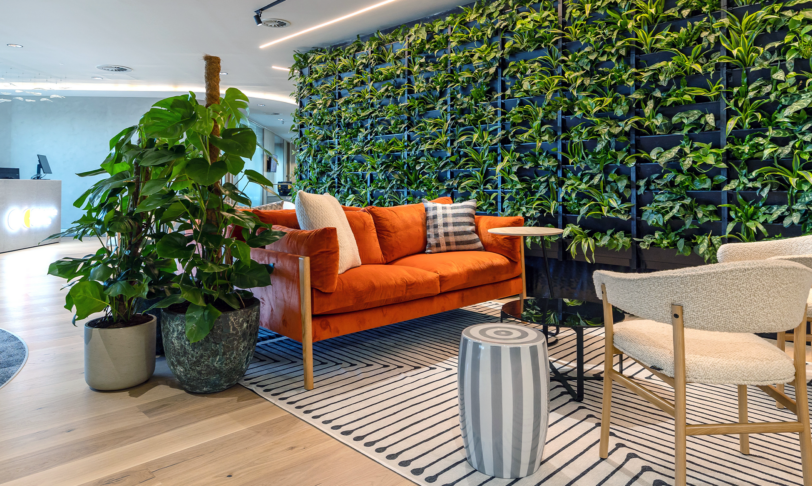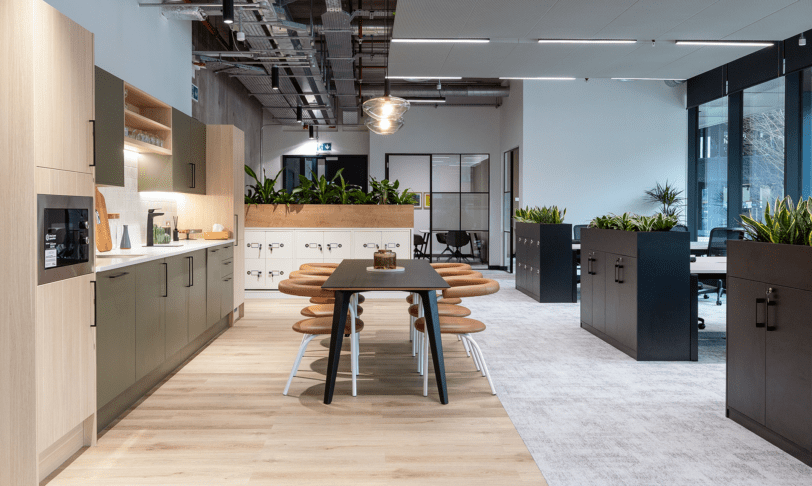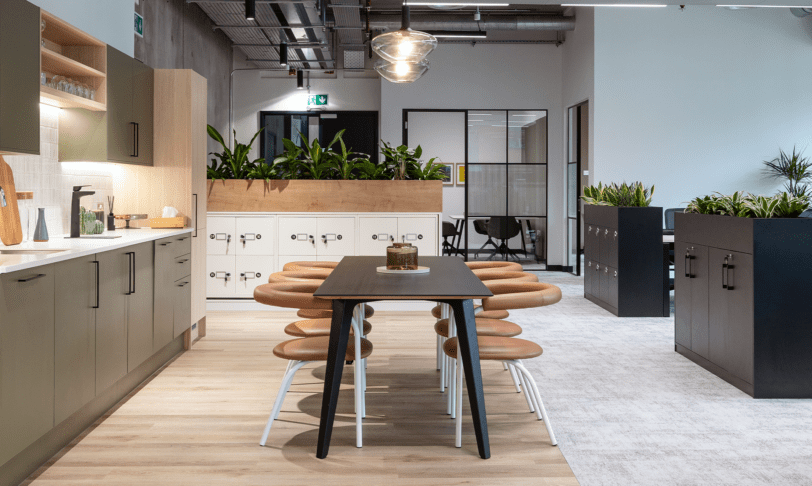Sustainability as a strategy: why green design is the future of commercial real estate
Sustainable workplace design has evolved significantly from its early days when compostable toilets and complex recycling systems were the main talking points. Today, green design is about much more than that. It’s not just innovative companies driving energy efficiency and low-carbon properties – landlords and investors are also prioritising green building design to remain competitive. As sustainability becomes central to tenant demand and regulatory compliance, it’s clear: a sustainmable approach is vital if you want your portfolio to stay resilient. With demand for energy-efficient and low-carbon spaces surpassing supply, investors must adapt or face the risk of falling behind.
As we explore the growing importance of green building design, we’ll examine the impact of ESG frameworks on commercial properties and how sustainable practices can boost your portfolio’s performance. From the financial benefits of green certifications to the operational savings of energy-efficient upgrades, we’ll cover why green design is no longer viewed as a trend – but instead as the future of commercial real estate.
The growing importance of ESG in green building design
As well as being ethically satisfying, green design could be the key to future-proofing your investments. ESG (Environmental, Social, and Governance) frameworks now shape both regulatory landscapes and investor priorities – governments are introducing stricter legislation, while tenants are increasingly demanding greener workplaces. For investors, adopting sustainable practices is key to maintaining compliance and ensuring portfolio resilience.
Tenants are seeking high-quality, sustainable workspaces and are also expecting more from landlords regarding amenity spaces. In the next few years, we will likely see significant activity from landlords, particularly those with sub-Grade A office space, looking to refurbish their buildings to improve the quality and ESG credentials, providing new options to tenants. – Charlie Moss
There’s more to ESG than meets the eye
While environmental considerations dominate ESG discussions, the social and governance aspects are equally critical. Social factors, such as creating inclusive, accessible spaces and supporting community initiatives, can elevate a property’s reputation and tenant satisfaction. Governance practices, including transparent reporting on energy use and sustainability commitments, help investors build trust with stakeholders.
Leading landlords are incorporating social value into their developments, such as CEG’s recent ESG-focussed building in Bristol, the EQ Building, which is built around a central auditorium and events space which local businesses and charity groups are encouraged to use.
Environmental considerations
First, there’s the legal considerations. The UK’s Minimum Energy Efficiency Standards (MEES) mandate a minimum EPC rating of “E,” with thresholds set to rise to “C” by 2027 and “B” by 2030. Commercial properties failing to meet these standards face decreased rental income, reduced market value, and potential long-term vacancies. According to research by BCLP, 11% of real estate portfolios, valued at an average of $442 million per firm, are at risk of becoming unlettable due to failing these incoming sustainability criteria.
Meanwhile, the case for sustainability in commercial real estate is clear. BCLP research found that 98% of corporate occupiers now consider sustainability when making rental decisions, underscoring its growing importance. Furthermore, 71% of investors expect properties with strong energy performance to have a higher resale value. Sustainability isn’t just good ethics – it’s good business.
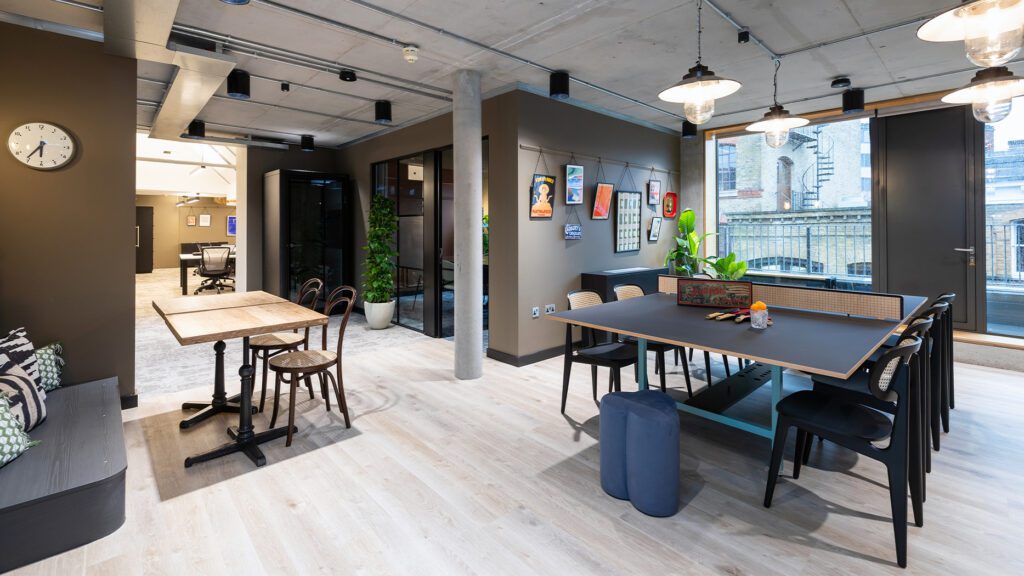
Green design ROI: How sustainability drives returns
Demand for energy-efficient buildings and sustainable low-carbon space is growing, yet the existing supply is struggling to keep pace. Across top global occupiers, JLL research found that a large majority of future requirements for eco-friendly office space will be tied to carbon commitments. However, current stock levels fall far short of demand.
This is why it’s never been more important for investors and landlords to increase their green credentials when building or refitting their spaces. After all, CBRE’s Sustainability Index shows that energy-efficient commercial properties achieved total returns of 11.2%, compared to 7.0% for inefficient properties.
When it comes to sustainable office design, green building certifications like WELL, BREEAM, and LEED aren’t just badges of honour – they’re proven drivers of ROI. LEED-certified properties command rental premiums of up to 20% and boast occupancy rates 11% higher than non-certified buildings. These certifications directly contribute to higher net operating income, in turn boosting a property’s valuation. You can find out more about each of certifications in our guide to commercial sustainability accreditations.
Operational savings are also significant. The World Green Building Council reports that green buildings can reduce energy and water costs by up to 37%. Energy-efficient retrofits, such as installing solar panels and advanced HVAC systems, deliver long-term returns and tenants and landlords will see savings on energy and water bills. For example, at Osborne Clarke, we utilised greywater harvesting to bring down water costs for the tenants. With utility costs accounting for a substantial portion of operational expenses, these investments make both environmental and financial sense.
What’s the catch?
Sustainable design doesn’t come without its challenges. Sourcing sustainable materials can increase costs, while retrofitting older buildings often involves complex structural modifications. Balancing aesthetics with both functionality and green objectives can also be tricky.
However, solutions are available. Green finance, such as sustainability-linked loans or grants for energy efficiency improvements, can offset upfront costs. Partnering with contractors experienced in retrofitting for sustainability ensures a seamless process, and engaging tenants early can align expectations and budgets, particularly for shared costs like energy-saving upgrades.
Tenant retention made easy
Tenants want spaces that align with their values and support their teams’ wellbeing. Sustainable design creates environments where people feel comfortable and equipped to do their best work, which directly impacts tenant retention. Features such as biophilic design, recycled materials, and natural lighting can all improve wellbeing and productivity. Landlords may also consider including active travel facilities – bike storage, lockers and showers – giving tenants the ability to choose sustainable commuting methods.
According to JLL, buildings with sustainable design elements such as these achieve 23% higher tenant retention rates than their conventional counterparts. However, while tenants prioritise sustainability, they are often reluctant to bear the costs. The BCLP study found that one-third of corporate tenants are unwilling to pay any premium for green buildings, and only 25% would pay more than 5% extra. This places the onus on landlords to balance sustainability investments with competitive pricing.
Building relationships with tenants and improving shared amenities can make spaces more attractive. Collaborations through “green leases,” where landlords and tenants align on sustainability goals, can also help bridge the gap.
Green design in action: FOUNDRY Wandsworth
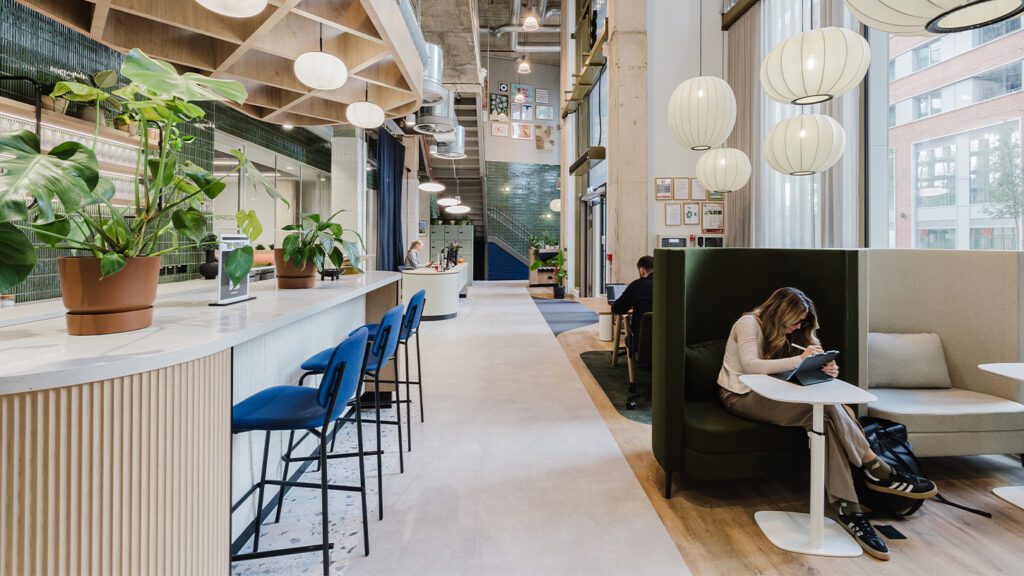
In partnership with L&G, we recently completed a new 14,000 sq ft coworking hub in central London for FOUNDRY. The new workspace is a part of L&G’s new mixed-use development, New Acres, which has been built to meet high sustainability criteria, future-proofing the development for years to come.
From the HVAC systems to internal partitions, every aspect of the FOUNDRY project was thought out to the highest degree of detail in order to create a workspace members would love, as well as ensuring a solid ROI for L&G. Reflecting a commitment to sustainability, the space is built to meet BREEAM Excellent standards and boasts an EPC A rating, ensuring low operational costs. All timber is FSC-certified, and materials and paints are VOC-free, whilst locally-made interior styling pieces were chosen. The unique styling, vibrant community and sustainability credentials proved popular to new members, with the site boasting FOUNDRY’s highest ever initial take-up stats.
You can read the full FOUNDRY Wandsworth case study here.
Why green building design is the future of commercial properties
Research from the UK Green Building Council predicts that by 2050, 80% of buildings will have undergone retrofits, highlighting the long-term importance of sustainable expertise. Sustainable design is reshaping how commercial properties are valued and managed. With regulatory pressures, tenant demand, and proven financial returns, fund managers must prioritise green strategies.
The best approach for both the planet and your bottom line is to design with longevity in mind. For example, quartz worktops are more energy-intensive to produce than their alternatives but are far more durable, making them a sustainable long-term investment. Upgrading existing furniture by reupholstering or refinishing is another way to cut costs while boosting your building’s sustainability credentials.
Ready to elevate your portfolio with green design?
Investing in green building design today means higher returns tomorrow. So don’t get left behind – adapt to the growing demand for sustainable, low-carbon properties and stay ahead of the competition.
Contact us today to discover how we can help you integrate green strategies for lasting value and portfolio resilience.
Call Charlie now at 01225 485 600 or drop us a message to get started.

